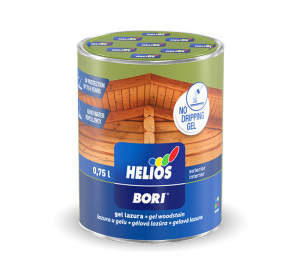Decision Tree Classification Springerlink
In this text, we’ll discover the fundamentals https://www.globalcloudteam.com/ of determination timber, probably the most commonly used determination tree fashions, and their pros and cons. Whether you’re a seasoned knowledge scientist or just starting out within the subject, understanding decision bushes is a vital a half of your machine learning toolkit. DT studying goals to map observations about an item to a conclusion. This conclusion may be either a attainable target class label or a goal value.
106 Tree Algorithms: Id3, C45, C5Zero And Cart#

The aim is to choose a pair such that the prediction accuracy improves. The classical examples of node impurity come from info principle, such as the well-known Gini index and entropy, proposed in the classification tree method very early days. Since then, many different splitting standards have been proposed, see [150] and references therein. Many knowledge mining software program packages present implementations of one or more determination tree algorithms (e.g. random forest).
Benefits Of Decision Trees In Machine Learning
Furthermore, continuous unbiased variables, such as revenue, must be banded into categorical- like courses previous to being utilized in CHAID. Bootstrap aggregated decision timber – Used for classifying data that’s troublesome to label by employing repeated sampling and building a consensus prediction. Regression bushes are decision timber whereby the goal variable incorporates steady values or actual numbers (e.g., the worth of a home, or a patient’s size of stay in a hospital). COBWEB maintains a knowledge base that coordinates many prediction tasks, one for every attribute. The algorithm creates a multiway tree, discovering for every node (i.e. in a grasping manner) the specific function that can yield the biggest data achieve for categorical targets.

Choice Tree Cart Implementations
- Decision tree analysis aims to establish the most effective model for subdividing all information into completely different segments.
- Three of the nodes are labeled Kyphosis absent and the remaining Kyphosis present.
- Each node is cut up intotwo or more youngster nodes to reduce the Gini impurity value for the node.
- Furthermore, they’ll deal with each categorical and numerical knowledge, and even lacking information by ignoring missing values.
- The use case for these models is to foretell future or rising developments in a spread of settings, but additionally to fill gaps in historic knowledge.
- A classification tree is a way of structuring a model to classify objects or information.
The second caveat is that, like neural networks, CTA is perfectly able to learning even non-diagnostic traits of a class as nicely. Thus CTA includes procedures for pruning meaningless leaves. A properly pruned tree will restore generality to the classification course of. Once a set of related variables is recognized, researchers could need to know which variables play main roles.

Choice Tree Strategies: Applications For Classification And Prediction
The `$where component signifies to which leaf the different observations have been assigned. By placing a very low cp we’re asking to have a very deep tree. So on this first regression on ptitanic we’ll set a very low cp. 3, the SVM and RF are the most well-liked classification methodology used in the last seven years. The service-oriented architectures include simple and yet environment friendly non-semantic solutions such as TinyREST [53] and the OGC SWE specs of the reference architecture [2] applied by various events [54,55].
Used In Each Marketing And Machine Learning, Choice Timber May Help You Choose The Proper Plan Of Action
The means of pruning is needed to refine determination timber and overcome the potential of overfitting. Pruning removes branches and nodes of the tree that are irrelevant to the model’s aims, or people who provide no further info. Any pruning must be measured by way of the method of cross validation in machine learning, which may evaluate the model’s capability to operate or its accuracy in a live environment. A regression tree is used to foretell steady target variables, while a classification tree is used to predict categorical goal variables.

Classification Trees With Unbiased Multiway Splits
A linear discriminant analysis of hurricane Class (Baro or Trop) utilizing Longitude and Latitude as predictors correctly classifies only 20 of the 37 hurricanes (54%). A classification tree for Class utilizing the C&RT-style exhaustive search for univariate splits choice correctly classifies all 37 hurricanes. Decision bushes are a preferred method in machine learning for good cause. The ensuing determination tree is simple to grasp because of its visualisation of the choice course of. This streamlines the method of explaining a model’s output to stakeholders without specialised knowledge of data analytics. Non-specialist stakeholders can access and understand the visualisation of the mannequin and information, so the information is accessible to numerous business groups.
How To Decide Tree Step-by-step
You can see the frequencystatistics in the tooltips for the nodes within the decision tree visualization. Each node is break up intotwo or extra baby nodes to reduce the Gini impurity worth for the node. Gini impurity is a functionthat penalizes the extra even distributions of goal values and is predicated on the goal frequencystatistics and the number of data rows corresponding to the node.
It is obtained by computing the tree classification accuracy improvement over theconstant model and dividing it by the fixed mannequin classification error. A fixed mannequin alwayspredicts the goal mode and its classification accuracy is estimated by the mode frequency. Areliable predictive classification tree is reported when its predictive power is bigger than adefault threshold of 10%.
Nonlinear multivariate splits are a real departure from interpretability, one of the primary salient features of classification bushes, and due to this fact less popular within the literature [86]. The standards used to split the info for classification trees measure the impurity, or, the combination of the target variable inside a node. The aim of the classification tree algorithm is to attenuate the impurity of the nodes because the tree is constructed. There are a number of impurity metrics that can be used, such because the Gini index, entropy, or classification error. One of the principle drawbacks of using decision timber in machine studying is the issue of overfitting.


